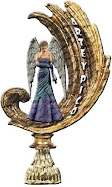
Hello I am Graham and I am 8 and a half. Uncle Reviewer asked me to write about costumes and said if I didn’t then he wouldn’t give me any Xmas pressies so here I am.
This year I am going trick or treating as a vampwolf. If a werewolf bites a vampire on a full moon he turns into a vampwolf and can fly and that’s what I am on Halloween. I will have teeth and fur and go grrr and chase everyone. Gregory Simms says that vampwolfs don’t exist but I don’t believe what he says because he says he saw a baby come out of his sister but I don’t think her mouth is big enough to eat one whole so he’s a liar. When I am a vampwolf I will bite Gregory Simms and he will fall over and die.
Lots of people in my class are going out dressed as accordions. They’ve got buttons and make noise and everything. I don’t like accordions because they make a really horrible noise that sounds like the pigeon that Malcolm Beswick’s Dad ran over and wasn’t dead yet but Malcolm Beswick’s Dad got a spade out of the back of the car and hit it and it stopped making a noise and I saw its brains. That’s why I don’t want to dress up as an accordion. They sound like death.
One boy in my class is going out for Halloween as a Pea Salesman. He will dress up in green clothes and have a big metal tray full of peas. I told him that a pea salesman is not even a real thing but he said that his Mum said they used to have pea salesmen when she was a girl but I think she didn’t want to buy a real costume. She probably found the peas on the floor because his family is poor and they can’t afford to waste peas. This is a stupid costume and I hate it.
Another popular costume this year is Nobel Prize-winning economist Milton Friedman. I think this is the scariest costume of all because Milton Friedman’s wrinkled face and bald head remind me of the unstoppable march of time that will carry us all down the path of history towards the unexplained infinite blackness of death. Also I find Friedman’s economic policies to be highly flawed but Julie Blackbury says she is dressing up as Friedman because his policies were influential and beneficial. I told Julie Blackbury that tax lowering as a tool of stimulating economic growth is empirically proven to be less effective than increased government spending but she said that the Friedman-inspired Reaganomics of the 80s ultimately recovered the US from stagflation but I said that the country would have recovered anyway without Friedman’s statist and totalitarian views and that the 2007-8 economic crisis was a direct result of Friedman’s policies and then I put a worm in her hair and she ran away.
Graham’s regular entertainment column will be appearing in Now Toronto Magazine from November 3rd. The Imaginary Reviewer had to fix a lot of the spelling in this review, and so Graham will be getting a Christmas present as promised, but it will be rubbish.





